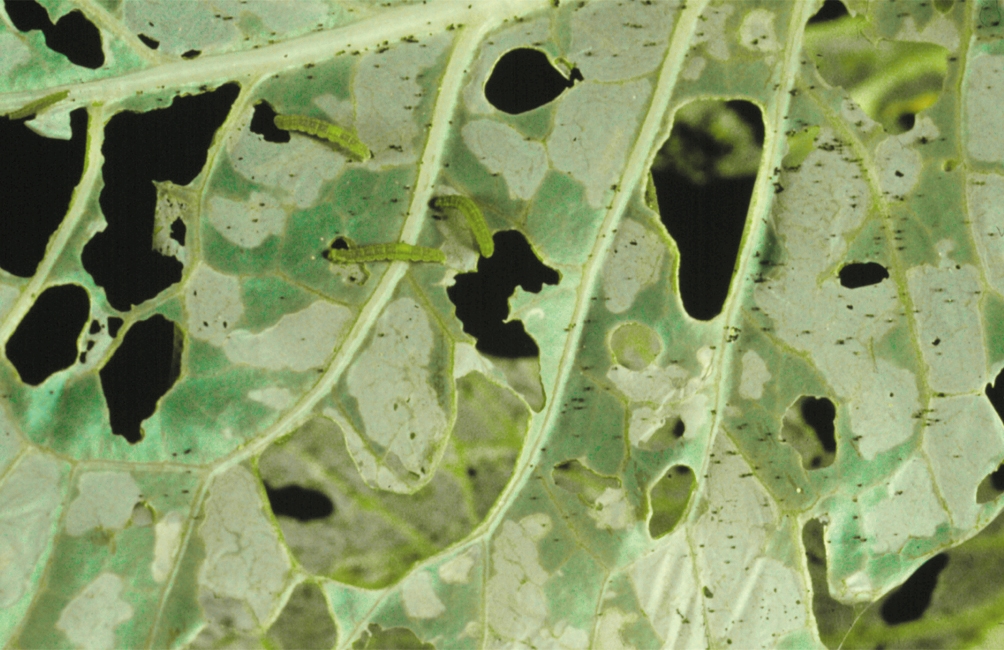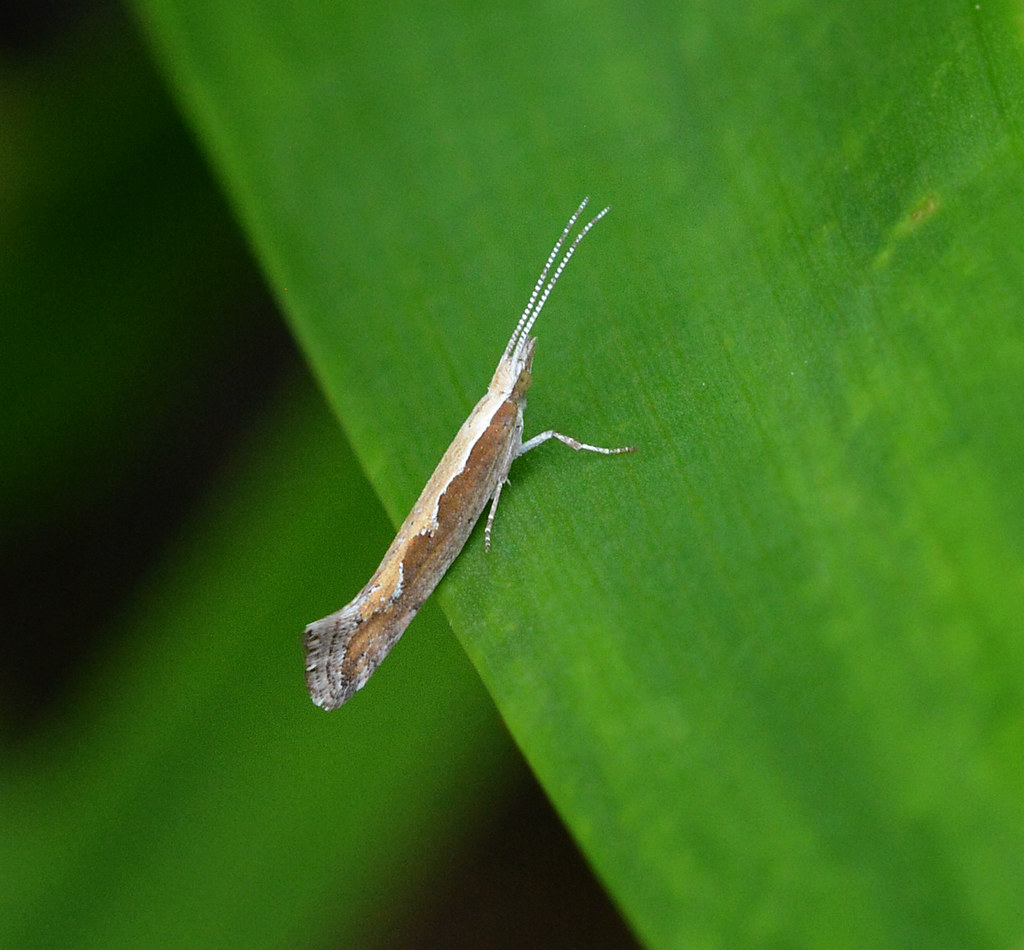
Polillas
Diamondback Moth
Plutella Xylostella
Pathogen:
Insect
Type:
Risk to the plant:
HIGH



DESCRIPTION
WHO CAUSES IT?
Plutella xylostella, known as the diamondback moth, is a lepidopteran insect that affects various species of plants in the Brassicaceae family and others similar to it. Adult females lay their eggs on the underside of leaves, where the larvae emerge and begin to feed on plant tissue. These larvae go through several phases of development, known as larval stages, during which they generate much of the damage by feeding on the leaves, leaving characteristic holes and desiccated areas. Later, the larvae transform into pupae, generally on the underside of leaves or in structures near the plant. After a pupal period, adults emerge and restart the cycle, with several generations per year in warm climates. This insect is especially problematic due to its high reproductive capacity and rapid spread under favorable conditions.
SYMPTOMS
The diamondback moth causes severe damage to lettuce and similar crops, compromising photosynthetic capacity and weakening plant structure. The larvae feed voraciously on the leaf tissue, perforating the leaves and generating irregular holes that facilitate the entry of secondary pathogens. In severe cases, the loss of leaf mass is significant, affecting the general development of the plant and reducing the quality of the product.
- Presence of irregular holes in the leaves caused by larvae.
- Desiccation and loss of turgor in the affected leaves.
- Perforated leaves that facilitate infection by other pathogens.
- Delayed growth of affected plants.
- Loss of crop quality, with leaves unusable for the market.



TEMPERATURE AND HUMIDITY
15-30°C
50-90%

HOW IS IT SPREAD?
Wind, direct contact between plants, agricultural machinery, infected plants introduced into the crop

HOW TO REMOVE IT?
Home remedies
There are no home treatments
Chemical treatments
• AZADIRACTIN 1% (AS AZADIRACTIN A) [EC] P/V
• Azadirachtin 2.6% (AS AZADIRACTIN A) [EC] P/V
• DELTAMETHRIN 10% [EC] P/V
• DELTAMETHRIN 2.5% [EC] P/V
• DELTAMETHRIN 2.5% [EW] P/V
• LAMBDA CYHALOTHRIN 0.0015% [ME] P/V
• LAMBDA CYHALOTHRIN 10% [CS] P/V
• METAFLUMIZONE 24% [SC] P/V
• SPINETORAM 2.5% [SC] P/V
Authorized treatments in organic farming
• AZADIRACTIN 1% (AS AZADIRACTIN A) [EC] P/V
• Azadirachtin 2.6% (AS AZADIRACTIN A) [EC] P/V
• LAMBDA CYHALOTHRIN 0.0015% [ME] P/V
• LAMBDA CYHALOTHRIN 10% [CS] P/V
Insect allies
PREDATORY MITES
LADYBUGS
LACEWINGS
PARASITIC WASPS
HOVERFLIES OR PARASITIC FLIES
PREDATORY BUGS
There are no natural allies
Mycodiplosis oidii (predatory mosquito)
EFFECTIVE PRODUCTS TO ELIMINATE THIS PEST
Sponsored link
Sponsored link
Sponsored link
Sponsored link
Sponsored link
Sponsored link
Effective against all types of fungi
- Use pheromone traps to monitor the adult population and detect their presence in the crop early.
- Implement physical barriers, such as fine mesh nets, to prevent adult access to plants during oviposition.
- Carry out crop rotations, alternating with species that are not hosts of the insect to reduce the population.
- Introduce natural enemies such as parasitoid wasps (*Cotesia plutellae*), which attack the moth larvae.
- Apply biological insecticides based on *Bacillus thuringiensis* or products based on entomopathogenic fungi, specific for the control of larvae without damaging other beneficial organisms.
- Avoid the indiscriminate use of chemical insecticides to prevent the emergence of resistance and preserve biological control agents.
- Maintain good field hygiene, eliminating plant debris that may serve as a refuge for pupae.
- Constantly check plants to detect initial damage and take immediate action.
























